
Robert Smith Candlish was a Scottish minister who was a leading figure in the Disruption of 1843. He served for many years in both St. George's Church and St George's Free Church on Charlotte Square in Edinburgh's New Town.

James Gillespie Graham was a Scottish architect, prominent in the early 19th century.
The New Town is a central area of Edinburgh, the capital of Scotland. It was built in stages between 1767 and around 1850, and retains much of its original neo-classical and Georgian period architecture. Its best known street is Princes Street, facing Edinburgh Castle and the Old Town across the geological depression of the former Nor Loch. Together with the West End, the New Town was designated a UNESCO World Heritage Site alongside the Old Town in 1995. The area is also famed for the New Town Gardens, a heritage designation since March 2001.
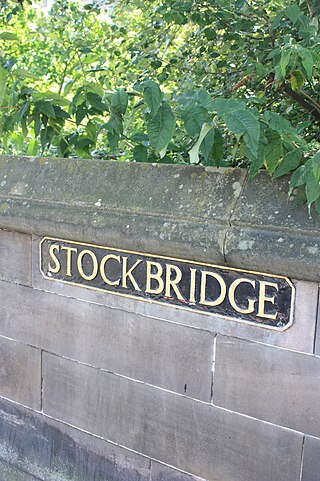
Stockbridge is a district of Edinburgh, located north of the city centre, bounded by the New Town and by Comely Bank. The name is Scots stock brig from Anglic stocc brycg, meaning a timber bridge. Originally a small outlying village, it was incorporated into the City of Edinburgh in the 19th century. The current "Stock Bridge", built in 1801, is a stone structure spanning the Water of Leith. The painter Henry Raeburn (1756–1823) owned two adjoining estates, Deanhaugh and St Bernard's, which he developed with the assistance of the architect James Milne. Milne was also responsible for the fine St Bernard's Church (1823) in Saxe Coburg Street. Ann Street, designed by Raeburn and named after his wife, is a rare early example of a New Town street with private front gardens.
Frederick Thomas Pilkington (1832-1898), pupil of his father, was a "Rogue" British architect, practising in the Victorian High Gothic revival style. He designed mostly churches and institutional buildings in Scotland. Typical of his work is the Barclay Church in Edinburgh, a polychrome stone structure with early French Gothic details.
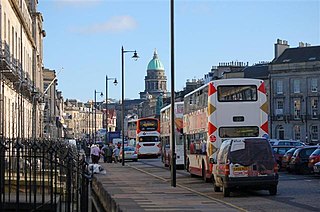
The West End is an affluent district of Edinburgh, Scotland, which along with the rest of the New Town and Old Town forms central Edinburgh, and Edinburgh's UNESCO World Heritage Site. The area boasts several of the city's hotels, restaurants, independent shops, offices and arts venues, including the Edinburgh Filmhouse, Edinburgh International Conference Centre and the Caledonian Hotel. The area also hosts art festivals and crafts fairs.
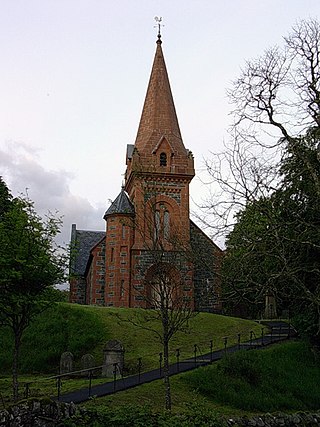
John Lessels was a Scottish architect and artist, active in Edinburgh and the Scottish Borders.
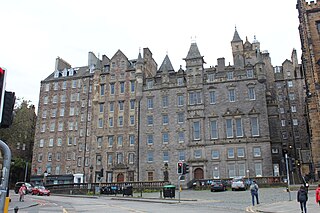
David Cousin was a Scottish architect, landscape architect and planner, closely associated with early cemetery design and many prominent buildings in Edinburgh. From 1841 to 1872 he operated as Edinburgh’s City Superintendent of Works.

Alexander Black was a Scottish architect, born in Edinburgh around 1790 who is mainly known for his association with George Heriot’s School, where he acted as Superintendent of Works for most of his active life.

Robert Matheson (1808–1877) was a Scottish architect operating for some time as Clerk of Works for Scotland and playing a major design role in many buildings, especially within Edinburgh. He was a great master of the Italian Renaissance style.

Robert Wilson was architect for the Edinburgh Board of Education and responsible for a high percentage of the city's schools. He is also noteworthy for involvement in several institutions aimed at improving the life of the poor and destitute in the city.
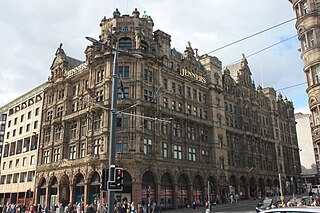
William Hamilton Beattie was a Scottish architect specialising in hotel design in the late 19th century.
Robert Reid Raeburn was a Scottish architect in the mid-19th century operating primarily in and around Edinburgh.

Thomas Bonnar was a Scottish interior designer and architect of note, working in the Edinburgh area. He is particularly remembered for his outstanding ceilings.

John Milne was a Scottish architect operating throughout the second half of the 19th century, working largely in the Fife area. He was described as an ‘’inventive neo-Jacobean and Scots Baronial designer’’. He exhibited works at the Royal Scottish Academy in the 1860s. He was also an inventor of a pyro-pneumatic grate: a heating system for churches. He self-financed several improvement schemes to the town of St Andrews
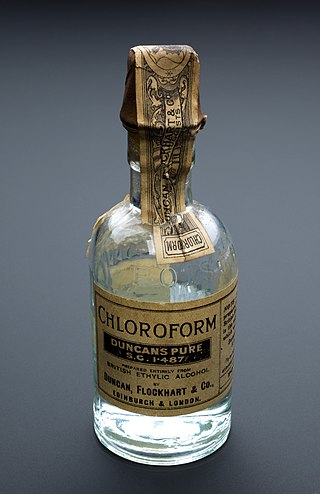
James Duncan FRSE FRCS FRCSE was a Scottish surgeon and manufacturing chemist responsible for much of the British supply of chloroform in the mid-19th century. From 1839 to 1866 he was Director of Duncan Flockhart & Co one of Scotland’s largest chemical manufacturers.

John Tait (1787-1856) was a Scottish architect operating in the first half of the 19th century responsible for several fine streets in Edinburgh all of which are listed buildings. One of his creations, 15 Rutland Square, houses the Royal Incorporation of Architects in Scotland.
David Robertson ARSA FRIBA (1834-1925) was a Scottish architect and artist. He was three times President of the Edinburgh Architectural Association.
John William Chesser SSC was a 19th/20th century Scottish solicitor and Tory politician who served as Lord Provost of Edinburgh from 1919 to 1921.
Bellevue is a district of Edinburgh, the capital of Scotland. It lies to the south east of Canonmills, west of Leith Walk and south of Leith, incorporating the easternmost extent of Edinburgh's New Town UNESCO heritage site. The area was formerly open fields which became the second and penultimate location of the Royal Botanic Garden in 1763 .

















